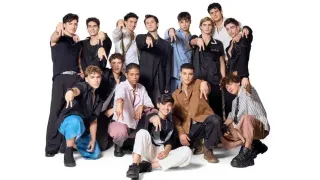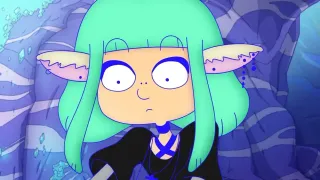
Aug 8
Julian Glander’s “Boys Go To Jupiter” Charts Surreal, Queer-Inclusive Adolescence in Animated Debut
READ TIME: 2 MIN.
Julian Glander’s debut feature, “Boys Go To Jupiter,” arrives as a visually inventive and thematically rich animated film that pushes the boundaries of coming-of-age storytelling. Set against the pastel-hued sprawl of suburban Florida, the film introduces viewers to Billy 5000, a teenager hustling to make $5,000 through gig work, primarily for a food delivery app reminiscent of DoorDash. The narrative takes a turn for the bizarre when Billy encounters Donut, a tiny alien who becomes the target of a nefarious juice company, Dolphin Groves, eager to exploit the extraterrestrial for profit. This intersection of the mundane and the fantastical underpins the film’s unique view of adolescence and self-discovery .
While “Boys Go To Jupiter” does not foreground explicit LGBTQ+ storylines, its resonance for queer audiences is palpable in both form and subtext. The film’s open embrace of the odd and the outsider—embodied by Billy’s friendship with Donut and his navigation of a world that feels both familiar and estranging—mirrors the journey of many LGBTQ+ youth as they seek belonging in environments that can feel alienating. The creative team’s casting choices further amplify this resonance: the voice cast includes out queer performers such as Julio Torres and Cole Escola, lending authenticity and diversity to the film’s universe .
Director Julian Glander, known for his work in 3D art and animation, crafted the entire film using the open-source program Blender. This DIY ethic and commitment to accessible, communal tools reflect values shared by queer creators across media who often turn to grassroots, digital, and collaborative spaces to express their identities and stories outside mainstream systems .
At its core, “Boys Go To Jupiter” is a meditation on late-stage capitalism’s impact on youth, set in a world where gig work and corporate overreach are the norm. Billy’s dilemma—whether to trade Donut for cash or act on his conscience—serves as a metaphor for the choices faced by marginalized people, including those in the LGBTQ+ community, who must often balance survival against authenticity and solidarity. The film’s depiction of empty restaurants, abandoned construction sites, and the omnipresence of screens underscores a sense of placelessness and longing for connection that resonates with queer experiences of navigating heteronormative or exclusionary spaces .
“Boys Go To Jupiter” is visually defined by its dreamlike, pastel palette and playful, lo-fi animation—a style that both subverts and celebrates traditional animated narratives. The film’s soundtrack, created by Glander himself, complements the visuals with a blend of electronic and pop influences, further establishing a mood of optimism and irreverence. This aesthetic innovation aligns with a tradition of queer art that uses color, camp, and surrealism to carve out spaces for joy and resistance amid adversity .
By situating its story at the intersection of the ordinary and the extraordinary, “Boys Go To Jupiter” offers a narrative of self-discovery that, while not explicitly queer, is deeply aligned with themes of otherness, chosen family, and creative survival. For LGBTQ+ audiences, the film stands as an invitation to see themselves reflected in the weird, wondrous corners of animated cinema.






